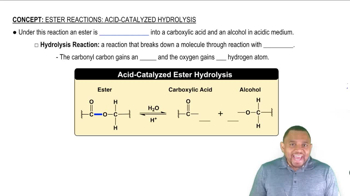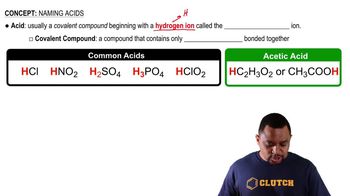Draw the condensed structural or line-angle formulas for the products of the following:
b.
 Verified step by step guidance
Verified step by step guidance Verified video answer for a similar problem:
Verified video answer for a similar problem:



 1:14m
1:14mMaster Acid-Catalyzed Ester Hydrolysis Concept 1 with a bite sized video explanation from Jules
Start learning